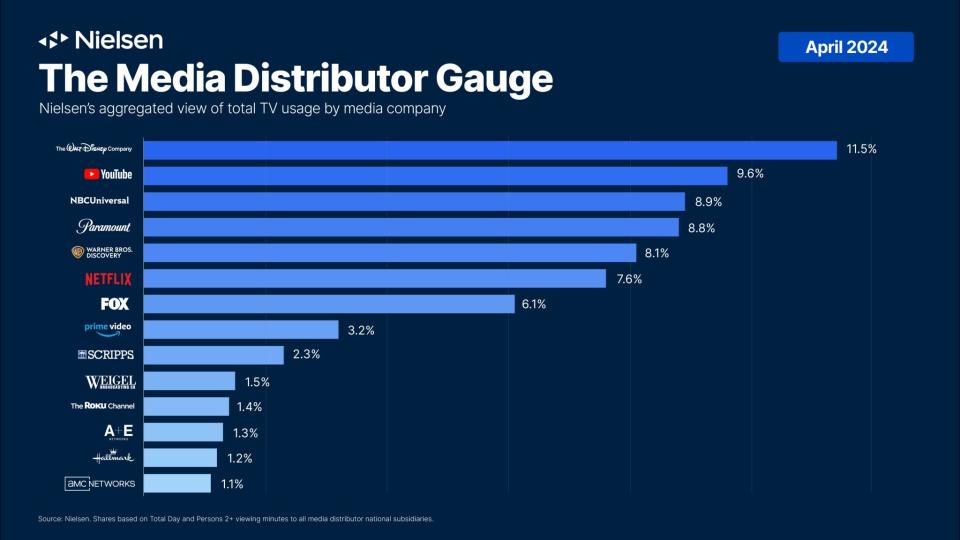Why the Big TV companies aren't 100% completely screwed. Yet.
Big TV used to have a monopoly on our attention — and our wallets.
But its audiences aren't gone yet. And a new metric has them doing better than standalone streamers.
This mirrors the pitch big TV companies are making this week in New York to advertisers.
The Big TV guys are screwed, right?
Because they used to have a monopoly on our attention and our wallets, but those days are long gone. Their audiences are evaporating, and the people left behind are… not young. Without the NFL, the entire thing collapses.
Yep! That's a pretty good summary of things, and one I've written many times.
But also, on the other hand: They're not dead yet.
And here to make that argument is Nielsen, which has a new way of tracking attention among media companies — including digital upstarts. And in this version, the TV guys are still sticking around. Many of them, in fact, are doing better than Netflix.
For now.
The idea is simple: Look at all of the TV time a big media company commands — via its streaming channels, but also its traditional broadcast and cable TV stations — and produce a single metric that measures viewership share.
That means, for instance, that Disney doesn't just get credit for ABC and ESPN and its other channels, but Disney+ and Hulu and ESPN+. Paramount gets credit for its streaming channels and its cable networks and CBS. Like so:

So, in this way of viewing things, Netflix is not the all-powerful viewing platform that's — once again — hoovering up shows and movies from desperate big media companies. It's merely the 6th biggest media company, behind Disney, NBC Universal, and even Paramount.
This also happens, not coincidentally, to mirror the pitch big TV companies are making this week in New York during glitzy presentations for advertisers: We have lots of ways to get your messages to audiences, no matter what screen or service they're using!
So that's nice for the TV guys. But it shouldn't make them too comfortable. For starters, as you will have noticed, the No. 2 player in this revised chart isn't a traditional media company but Google's YouTube — which somehow still doesn't receive enough attention from media chatterers. Even though it's clearly a viewing and advertising juggernaut.
Just as important: While it's fair for Nielsen (and the TV guys) to argue that combining traditional TV plus streaming gives them lots of reach, advertisers — the people they're trying to convince with that argument — don't seem to care that much. The overall pool of TV ad dollars continues to shrink, year after year, because that money is chasing eyeballs that aren't watching TV, period. And that won't change no matter how you present the data.
Read the original article on Business Insider

